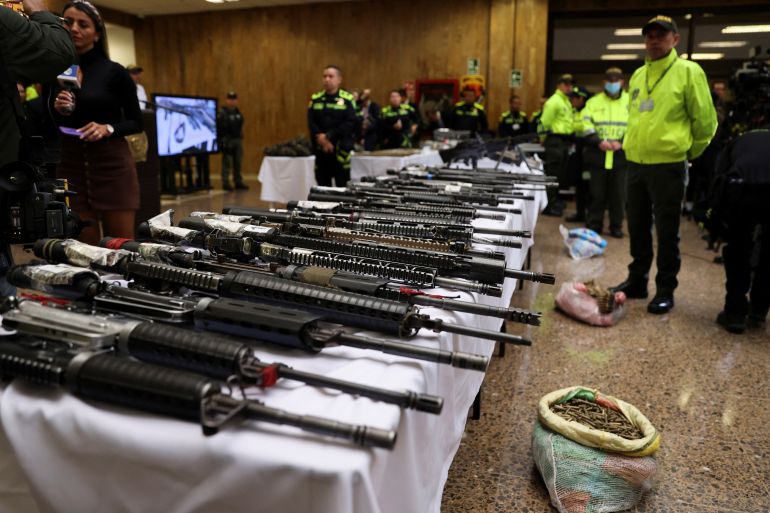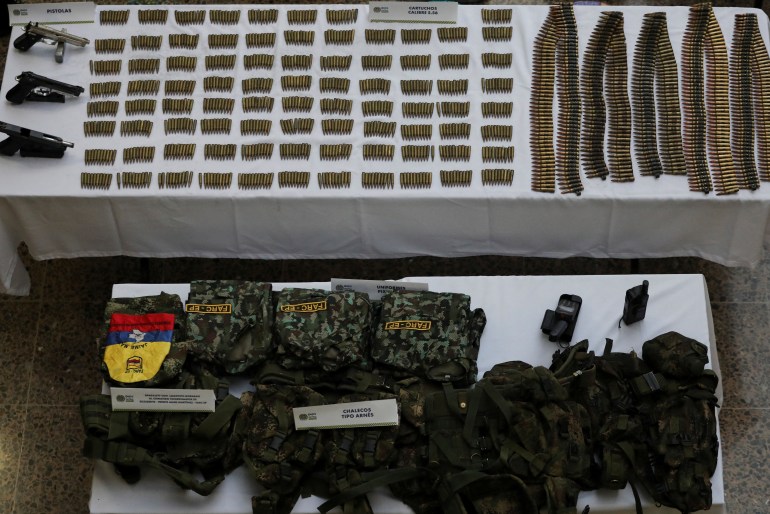Colombian police seize weapons in ‘important blow’ to armed group
Arsenal of weapons, including M60 machine gun and grenades, belonged to FARC rebel dissidents, Colombian police say.

Colombia’s national police force has said it confiscated an arsenal of weapons, including grenades and a machine gun, belonging to dissidents from the now-disbanded Revolutionary Armed Forces of Colombia (FARC) rebel group.
Though the Estado Mayor Central dissidents rejected a 2016 peace deal between Bogota and the FARC, they had agreed to a recent ceasefire with the government of left-wing President Gustavo Petro.
Keep reading
list of 3 itemsColombia backtracks on ceasefire announcement with ELN rebels
Colombia and Venezuela to fully reopen shared border
The arsenal of 33 guns, an M60 machine gun, grenades, more than 30,000 bullets and uniforms was being transported in two vehicles found abandoned in the Narino province in southwestern Colombia.
“The confiscated arsenal constitutes one of the most important blows in recent years,” national police Director General Henry Armando Sanabria told reporters on Monday. “With this we avoid the strengthening of an armed group.”
The guns — made in the United States, Israel and Russia — had previously been used, and it remained to be established if they had been purchased on the black market or stolen from the military during attacks, Sanabria said.
He added that it was up to the government to decide if the movement of the arsenal constitutes a violation of the dissidents’ ceasefire with the government.

Petro, Colombia’s first left-wing president, has promised to pursue a “total peace” plan and negotiate with armed groups to try to bring an end to the armed conflict that has killed more than 450,000 people across the country.
Violence has surged in Colombia in recent years, especially in parts of the country that lie outside government control and where armed groups are involved in drug trafficking and other illicit activities. The INDEPAZ research institute recorded nearly 100 massacres last year.
The Colombian government signed a peace agreement with the FARC in 2016, which saw members of the left-wing rebel group disarm, but some FARC dissidents rejected the deal and continued to use armed violence.
Late last year, the Colombian government concluded a first round of peace talks with the country’s largest remaining armed group, the National Liberation Army (ELN), in neighbouring Venezuela.
Then, on New Year’s Eve, Petro declared that a temporary truce had been agreed with the country’s five largest armed groups, including the ELN, from January 1 to June 30.
Bogota later backtracked on that announcement after the ELN rebels said they were not part of any such deal. But Interior Minister Alfonso Prada said ceasefires remained in force with the other four groups, including the Estado Mayor Central FARC dissidents.